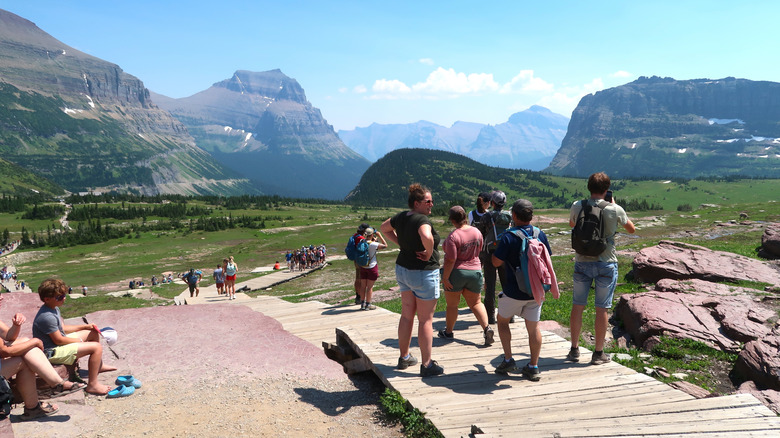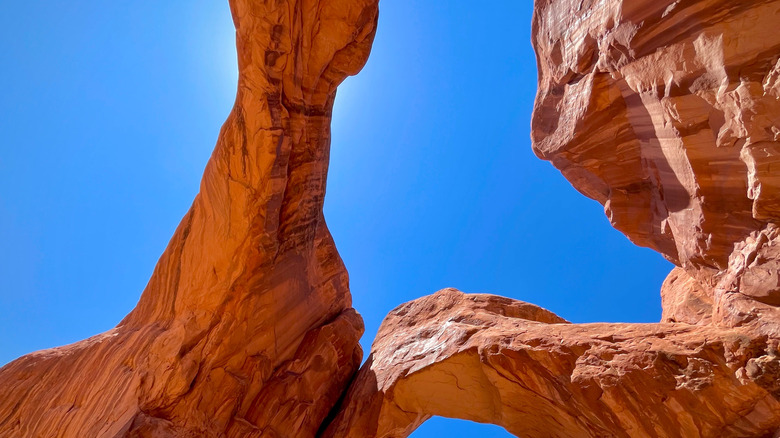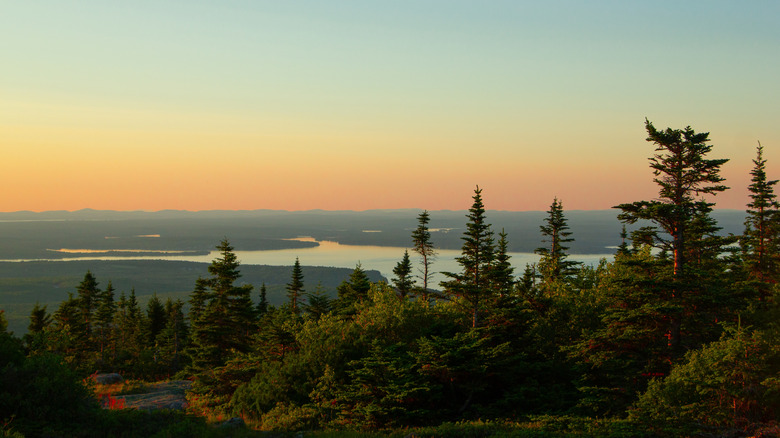The Iconic National Parks In America That Require Reservations To Manage Summer Crowds
Between the bright sunshine and the fact that kids are on vacation from school, it's not surprising that summer is the busiest time of the year for the majority of national parks in the United States. To combat crowds, many parks are limiting the number of people who can enter the most popular spots by requiring reservations. Depending on your plans, you may need some kind of reservation when you visit Acadia National Park, Arches National Park, Carlsbad Caverns National Park, Gateway Arch National Park, Glacier National Park, Haleakalā National Park, Rocky Mountain National Park, Shenandoah National Park, or Yosemite National Park.
Some, like Arches National Park, require you to pay a small fee to reserve the time slot when you'll enter the park to cut down on vehicle traffic during the busy summer months. Others require you to book tours or passes for a specific, popular attraction all year long, like Shenandoah National Park's Old Rag Mountain hike in Virginia. In general, you can make these reservations for a dollar or two through Recreation.gov. To give yourself the best chance at getting the reservation you want, keep an eye on the National Park website and make sure you know when early reservations for your favorite park become available.
What kind of reservations do you need to visit national parks?
Reservations are not the standard at national parks. Different U.S. national parks handle admissions differently, and, believe it or not, you can just walk into most of the lands maintained by the National Park Service without paying. In fact, some favorites, like Katmai National Park and Mammoth Cave National Park, are always free to visit. Others, like Yellowstone National Park and Grand Canyon National Park, do charge a fee for an entrance pass, but you don't need to reserve one in advance; you can just drive up to the entrance station and buy one. Once you have it, you can go in and out of the park at any time as often as you want for anywhere from 1 to 7 days, depending on which park it is.
Some national parks avoid crowds during peak season by using a reservation system. However, since this can change depending on the season, month, or even time of day, it's always a good idea to check while you're planning your trip. Fortunately, timed entry reservations typically cost around $1-2 at the time of writing, so it's not a big deal if you change your mind. Most parks also make exceptions if you have a campsite or tour of any kind reserved, but be sure to double-check whether you're exempt from timed entry when you book a sunny boat tour or a summertime horseback ride.
Navigating the different reservation systems at different national parks
If you're planning to visit a park that uses timed entry reservations, you'll need to plan ahead and make sure you understand the requirements. For instance, if you want to visit Arches National Park and its famous Broken Arch Trail, you may need to start your planning very early. Timed entry tickets go on sale on Recreation.gov a full six months ahead of time. Others, like Glacier National Park, aka the Crown of the Continent, only have timed entry at certain entrances from mid-June to late September, between 7:00 a.m. and 3:00 p.m. Those reservations are only available four months in advance. Still others, like Haleakalā National Park, only require timed entry in their most popular region at the most popular time.
If you want to go to the Summit District between 3:00 a.m. and 7:00 a.m. to catch a truly breathtaking sunrise, you'll need to make a reservation 60 days in advance; otherwise, you can just pay at the entrance. The most extreme timed entry system may be at California's Yosemite National Park — if you want to even drive through the park between 6:00 a.m. and 2:00 p.m. during Memorial Day Weekend, between mid-June and mid-August, or on Labor Day Weekend, you'll need to make a reservation.
Other parks may not require reservations to enter the park but do require you to book their most popular attractions in advance any time you go. These are often hiking trails, tours, and scenic drives. For instance, Zion National Park in Utah's Angels Landing (a hike that attracts visitors despite its deadly reputation) requires you to book in advance. Similarly, at Acadia National Park, the Cadillac Summit Road [pictured above] requires timed entry, while the park itself does not.


